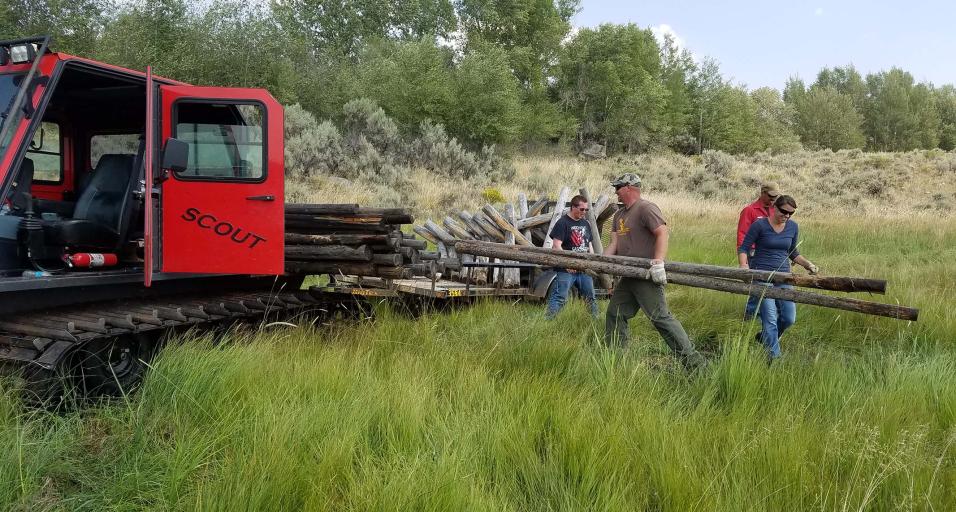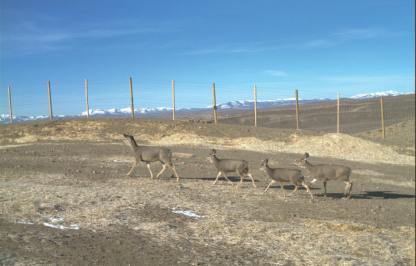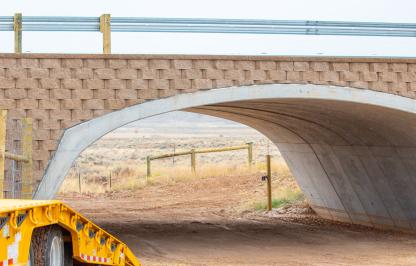One of the most critical mule deer migration routes in the West is the Red Desert to Hoback corridor. Last year, the Wyoming Game and Fish Department, in collaboration with The Conservation Fund, acquired the 364-acre Fremont Lake bottleneck property - now named the Luke Lynch Wildlife Habitat Management Area (WHMA). This acquisition protected it from development that would have fragmented migration. Now this fall, Game and Fish is partnering with the Upper Green Muley Fanatics Foundation, the Wyoming Wildlife and Natural Resource Trust Fund, and Jonah Energy to replace fencing on the property to allow for easier big game passage during migration.
“The old stock fences on the property were not wildlife friendly. This fence was removed and replaced with a pole-top wildlife friendly fence,” said Kyle Berg, Pinedale habitat access biologist. “Converting older fencing to a wildlife friendly design means that deer, moose, and other migrating game will not get caught in while enroute.”
Game and Fish and its partners removed and replaced 1.5 miles of fence at what is considered the pinch-point of the migration route. Mule deer use this route each fall and spring to move between winter and summer habitats.
“It’s an improvement that will make a difference for mule deer migration, and Game and Fish is grateful for the support and volunteer hours invested in this project,” said Berg.
The Luke Lynch WHMA is a key section in the longest mule deer migration route ever recorded in the lower 48 states, and researchers at the University of Wyoming had identified the Fremont Lake Bottleneck property as the most threatened portion in this internationally-significant bi-annual Red Desert to Hoback Mule Deer Migration.
Crucial mule deer migration route more accessible with new fencing
Wyoming Game and Fish (307) 777-4600




